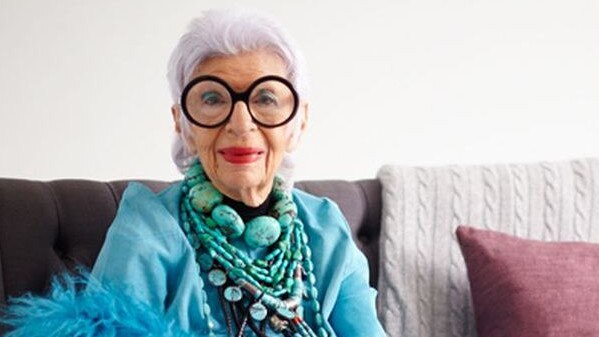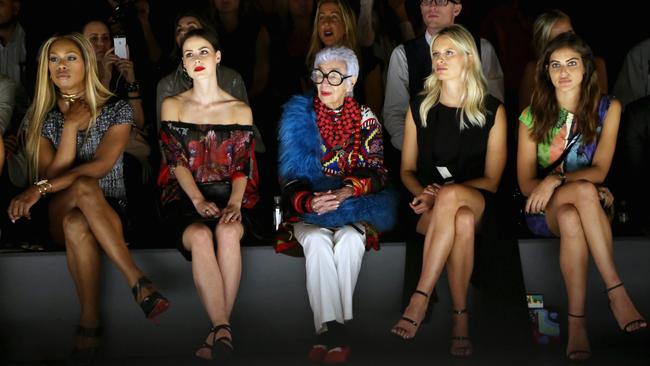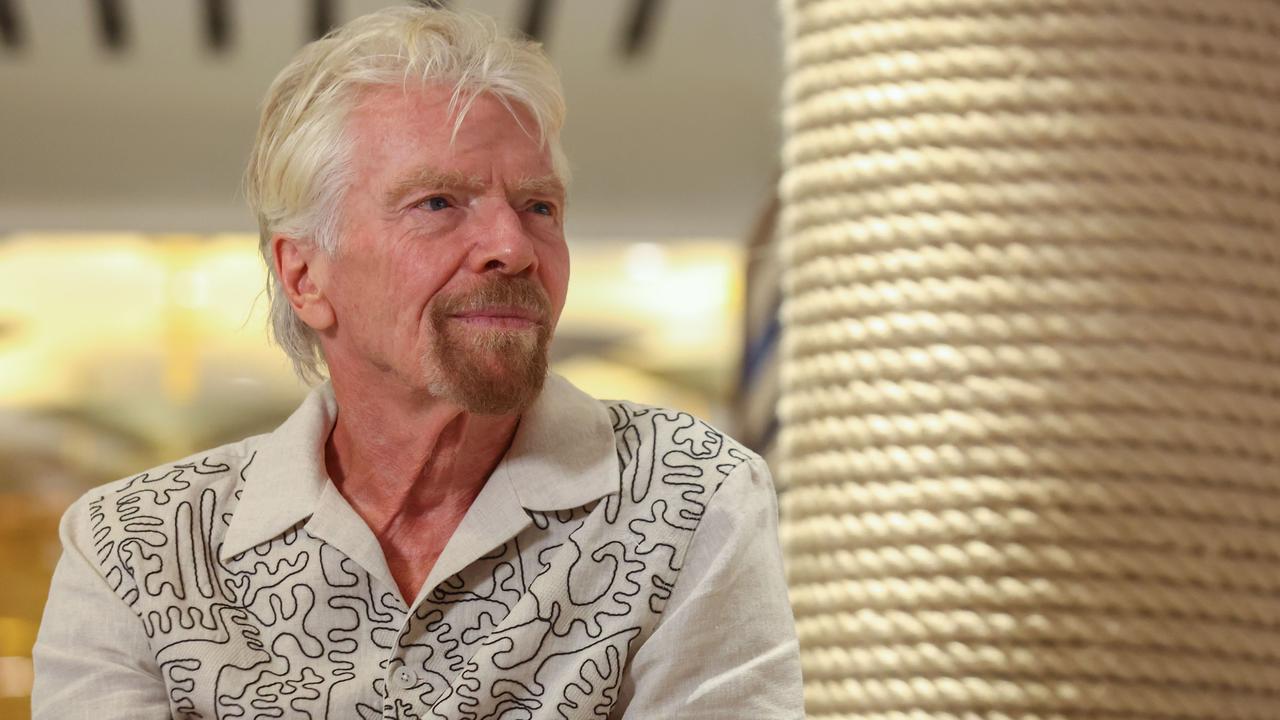Iris Apfel has left a legacy of style, irreverence and pleasing herself
Remembering Iris Apfel, the interior designer to nine US presidents and self-styled ‘geriatric starlet’ who shot to fame in her eighties.

With her saucer-sized glasses, zinging shades of lipstick and armour of costume necklaces, Iris Apfel was a style maverick who shot to fame in her ninth decade. Untroubled by age, she jetted to fashion shows and Vogue shoots, dishing out her brand of no-nonsense advice – or Irisisms. “Style is attitude, attitude, attitude,” she quipped.
After decades as the go-to interior designer of American presidents and socialites, she embraced her new status as a nonagenarian pin-up with gusto. She even devised her own tagline: geriatric starlet. Her beady eye for a bargain was legendary; she took as much pleasure in buying bags in a downtown Brooklyn flea market or a Turkish bazaar as with a couture dress in a designer store.
With a coiffed cap of silver hair and a figure as slender as any model’s, she threw together feathers and evening coats; Dior haute couture with Bakelite jewellery; Dolce & Gabbana lizard trousers with vintage fur.
She hated what she called “matchy-matchy” and once described her look as “more is more”.
On shoots she would arrive with trunks of accessories and surprise photographers as she continued to pile items on, saying: “I don’t think it’s enough, do you?” To the smiling bemusement of her adoring husband and business partner, Carl, she kept everything; her wardrobes spanned thousands of items.
Apfel became an overnight sensation when she was asked in her 80s to curate a fashion exhibition for the Metropolitan Museum of Art in New York from her own shopping collection. In 2005 she had received a telephone call from the curator, Harold Koda, asking if he might borrow a few items.
“I said, ‘Oh that’s a great idea. What would you like?’ ” Apfel recalled. “They said, ‘Well, we don’t know. What have you got?’ That opened the Pandora’s box. They started to go through all the closets, all the armoires, all the drawers, all the boxes, things on top of the closets, under the bed … Before you know it, we had to push all the furniture to one side, and we had to buy 10 racks to hang stuff.” Koda christened her the “rare bird of fashion”, which led to the name of the exhibition, Rara Avis: The Irreverent Iris Apfel – an instant hit among critics and the public alike.

Offers to design handbags and lipsticks began to roll in and showed no sign of stopping. Ever savvy, she turned standing out from the crowd into a business, preaching: “I don’t set out to break rules. I just don’t pay any attention to them.”
Apfel continued to globe-trot despite two hip operations. Interviewers often had to track her down on location in France or Palm Springs. Possessing plenty of old-fashioned “pep” – as one person who met her described – she used words such as “smashing” and “pizzazz”. She rattled out commands – demanding of interviewers, for instance, “Are you writing this down?” – and rarely seemed to suffer any crisis of confidence. “I like to do what I like to do and please myself,” she said.
She railed at ageism and the obsession of modern designers with making clothes for teenagers. “They use these models who look 15,” she once raged. “How can an older woman relate to a little kid running up and down the runway?”
Iris Barrel was born an only child in 1921 and grew up in Queens in a working-class neighbourhood with her parents and grandparents. Her father, Samuel, worked in the family glass and mirror business and her Russian-born mother, Sadye, ran a boutique. “We were comfortable but my father still taught me to read the right side of the menu,” she once said. Her mother, who adored accessories, taught her about fashion. She recalled, aged four, screaming because she hated the hair ribbon her mother was making her wear.
By 12 she was taking every Thursday afternoon off school to explore Manhattan’s shops, riding on the subway for a nickel. She was enchanted with the antique stores in Greenwich Village. She was told by the woman at one concession in a department store: “You’ll never be pretty but it doesn’t matter, you have something much better – you have style.”
Apfel studied art history at New York University, then went to art school in Wisconsin. She worked as a copy editor on Women’s Wear Daily and then an apprentice with an interior designer of apartments during World War II.
She came into her own as a designer after she wed Carl Apfel in 1948. “From the time we married, we did everything together,” she said after his 2015 death. “We worked together, we travelled together, we lived together – I never went anywhere without him.”
After Apfel could not find a fabric she needed for a renovation project, the couple started their own company, Old World Weavers, that meticulously replicated historic materials, especially 18th and 19th-century French prints and weaves. In the early days they marched the streets of Manhattan to drum up sales with a suitcase full of samples.

Never seeing herself as an “empty-headed fashionista”, she hated dealing with some of the “shallow, silly women” who frequented the showroom in Florida but their reputation grew, with clients including Greta Garbo and Estee Lauder.
They began to work for the White House, where they eventually served nine presidents. “It was a relatively easy job, actually,” Apfel recalled, “because everything had to be as close as humanly possible to the way it was.” She described how Jackie Kennedy brought in a French designer: “After that we had to throw it all out and start again. But I did like Mrs Nixon. She was lovely.”
To source fabrics and prints she and Carl crisscrossed the globe in the 1950s and ’60s by trans-Atlantic steamer. They never had children. “You can’t do everything. I wanted a career and I wanted to travel.” In typical style, she added: “Having children is like protocol. You’re expected to. And I don’t like to be pigeonholed.”
Of her ultimate trademark, Apfel claimed she never counted the pairs of glasses she had. “Every time I saw an interesting-looking spectacle frame, I bought them.”
The couple sold their company in 1995 and lived quietly until Apfel was thrust into the spotlight. Carl remained her devoted companion. They still held hands in the back of taxis and he appeared cheering her on from the audience at lectures.
After his death, she spent her spare time haggling for jewellery in Harlem, often from a wheelchair, and still relished attention. In 2014 she starred in a documentary, entitled simply Iris. Aged 93 she was the face of a fashion campaign for design company Kate Spade and at 97 she signed a modelling contract with global agency IMG.
She insisted: “I have fallen into everything. I never had a plan.”
THE TIMES







To join the conversation, please log in. Don't have an account? Register
Join the conversation, you are commenting as Logout